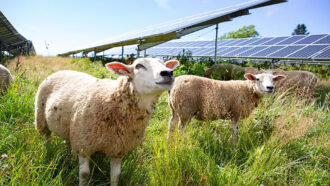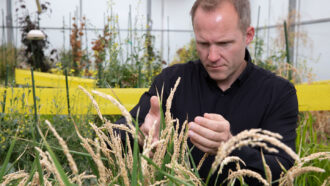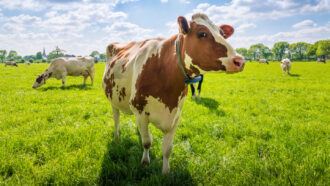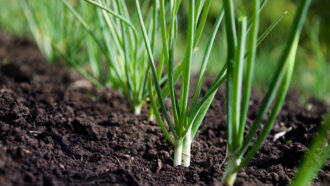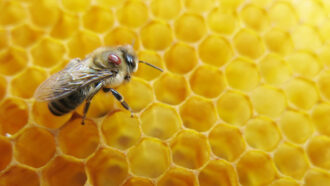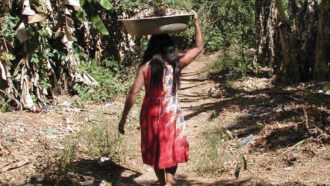Potty-trained cows could help reduce pollution
These cattle answer nature’s call using a bathroom stall
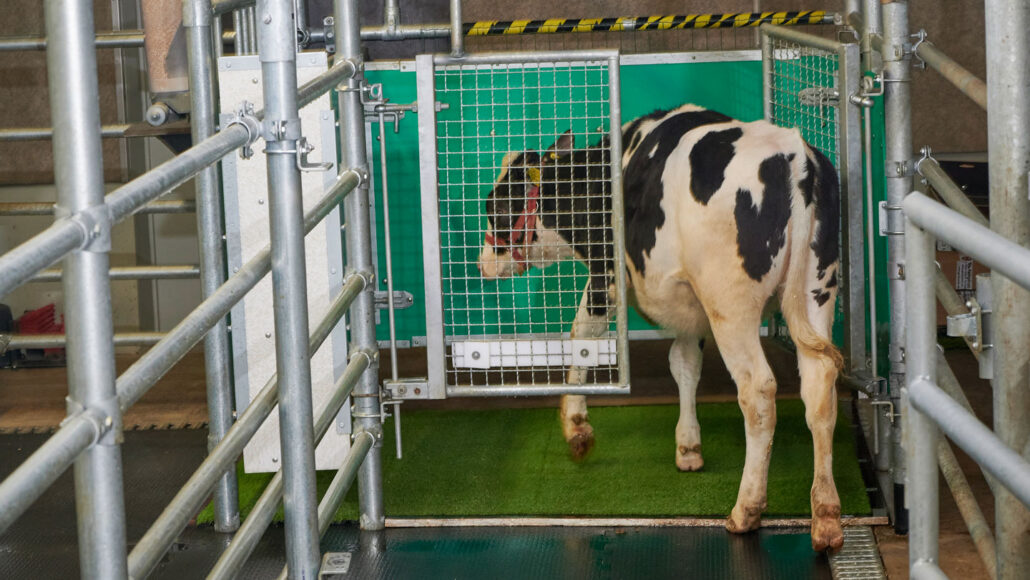
This cow is a whiz at potty training. Researchers trained it and other calves to use a bathroom stall (pictured) when they need to pee.
FBN (CC BY-SA)
A small herd of cows in Germany has learned an impressive trick. The cattle use a small, fenced-in area with artificial turf flooring as a bathroom stall.
The cows’ toilet training talent isn’t just for show. This setup could allow farms to easily capture and treat cow urine — which often pollutes air, soil and water. Nitrogen and other components of that urine could be used to make fertilizer. Researchers described this idea online September 13 in Current Biology.
The average cow can pee tens of liters (more than 5 gallons) per day, and there are some 1 billion cattle worldwide. That’s a lot of pee. In barns, that urine typically mixes with poop across the floor. This creates a mixture that fouls the air with ammonia. Out in pastures, pee can leach into nearby waterways. The liquid can also release nitrous oxide, a potent greenhouse gas.
Lindsay Matthews calls himself a cow psychologist. “I’m always of the mind,” he says, “how can we get animals to help us in their management?” He studies animal behavior at the University of Auckland. That’s in New Zealand.
Matthews was part of a team in Germany that tried to potty-train 16 calves. “I was convinced that we could do it,” Matthews says. Cows “are much, much smarter than people give them credit for.”
Each calf got 45 minutes of what the team calls “MooLoo training” per day. At first, the calves were enclosed inside the bathroom stall. Every time the animals peed, they got a treat. That helped the calves make the connection between using the bathroom and getting a reward. Later, the researchers put the calves in a hallway leading to the stall. Whenever the animals visited the little cows’ room, they got a treat. When the calves peed in the hallway, the team spritzed them with water.
“We had 11 of the 16 calves [potty trained] within about 10 days,” Matthews says. The remaining cows “are probably trainable too,” he adds. “It’s just that we didn’t have enough time.”
Lindsay Whistance is a livestock researcher who wasn’t involved in the study. She works at the Organic Research Centre in Cirencester, England. “I’m not surprised by the results,” Whistance says. With proper training and motivation, “I fully expected cattle to be able to learn this task.” But it may not be practical to potty train cows on a large scale, she says.
For MooLoo training to become widespread, “it has to be automated,” Matthews says. That is, machines instead of people would have to detect and reward cow urination. Those machines are still far from reality. But Matthews and his colleagues hope they could have big impacts. Another team of researchers calculated the potential effects of cow potty training. If 80 percent of cow urine went into latrines, they estimated, ammonia emissions from cow pee would drop by half.
“It’s those ammonia emissions that are key to the real environmental benefit,” explains Jason Hill. He’s a biosystems engineer who was not involved in the MooLoo training. He works at the University of Minnesota in St. Paul. “Ammonia from cattle is a major contributor to reduced human health,” he says.
Potty training cows may not just be beneficial for people. It could also make farms cleaner, more comfortable places for cows to live. Besides that, it’s just udderly impressive.

